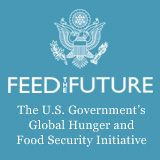Publication
A strategic assessment of the potential for freshwater fish farming in Latin America
Details
Author(s):
James McDaid Kapetsky
Type of Document:
Research Report
Publisher/Journal:
Not Available
Date of Publication:
1997
Place of Publication:
Not Available
Description
Abstract: Marine and many inland fishery resources are heavily exploited or overexploited, and although there is potential for increasing production from inland fisheries through intensification, development of aquaculture holds the most promise in the long term for improving food security through increasing the supply of fish. Currently, inland aquaculture production in Latin America is insignificant compared with the output from inland and marine fisheries. Lack of good planning at the national level has been identified as a serious impediment to the development of aquaculture. Estimates of potential are scarce that are both comprehensive and comparable over large geographic areas. Accordingly, the Objectives of this study was to estimate the potential for warm-water and temperate-water fish farming in the fresh waters of Latin America in order to stimulate improved planning for aquaculture development at national levels, and at the same time to provide a tool to plan comprehensively for technical assistance activities by FAO and other national and international organizations.
The present study is patterned on an estimate of warm-water fish farming potential made for Africa. However, a number of refinements have been made, one of which is a fourfold increase in resolution (i.e., to 5 arc-minutes, equivalent to 9 km x 9 km grids at the equator), thereby making the results much more usable for assessing fish farming potential at the national level. Another refinement is that, for the first time, a bio-energetics model has been incorporated into a geographical information system (GIS) to predict fish yields over large geographic areas. A gridded water temperature data set was used as input to the bioenergetics model to predict numbers of crops per year for four species: Nile tilapia (Oreochromis niloticus), tambaqui (Colossoma macropomum), pacu (Piaractus mesopotamicus) and carp (Cyprinus carpio). By varying input levels and sizes at harvest, opportunities for two levels of commercial fish farming and for small-scale fish farming were identified.
In addition to the suitability of each 9 x 9 km grid cell for the production of the above-mentioned species, each grid cell was evaluated for a number of other factors important for fish-farm development and operation. These included urban market potential based on travel time proximity and population size of urban centres, potential for farm-gate sales based on population density, engineering and terrain suitability for pond construction using a variety of soil attributes, water loss from ponds due to evapo-ration and seepage, and availability of agricultural by-products as feed inputs based on crop potential. Commercial and small-scale aquaculture models were developed by weighting these factors using a multiple criteria evaluation procedure. Areas unavailable for inland fish farming development were identified by incorporating protected areas and large inland water bodies as constraints. Finally, the yield potential of each grid cell for each of the four species was analysed using the growth model together with the other factors in the commercial and small-scale models to show the coincidence of each class of suitability with each range of yield potential.
Potential for inland fish farming is high in continental Latin America. From 8% to 60% of the continental area scores from suitable to very suitable for small-scale farming of Nile tilapia and carp, respectively. In the same areas, from 0.9 to 1.7 crops/y of Nile tilapia and from 0.9 to 1.8 crops/y of carp can be realized by harvesting at modest weights. The most important factor for commercial fish farming–urban market potential–scores high across more than one-half of the continent. For Nile tilapia and carp, from 19% to 44% of Latin America rates from suitable to very suitable for commercial farming. From 1.2 to 2.4 crops/y of Nile tilapia and from 1.2 to 2.3 crops/y of carp can be realized on the same areas by feeding at 75% satiation and harvesting at a moderate weight. Tambaqui and pacu occupy an intermediate position in terms of the surface area that is suitable or very suitable for commercial farming. From 0.7 to 1.4 crops/y for tambaqui and from 1.0 to 2.0 crops/y for pacu can be achieved from areas that are suitable or very suitable for commercial farming by feeding at 75% satiation and harvesting at a moderate weight.
From a country viewpoint, at least 18 of the continental countries have some area with potential that rates suitable or very suitable for farming of Nile tilapia and pacu, while there are 19 in the same category for tambaqui. Finally, there are opportunities for carp farming in all 21 countries.
